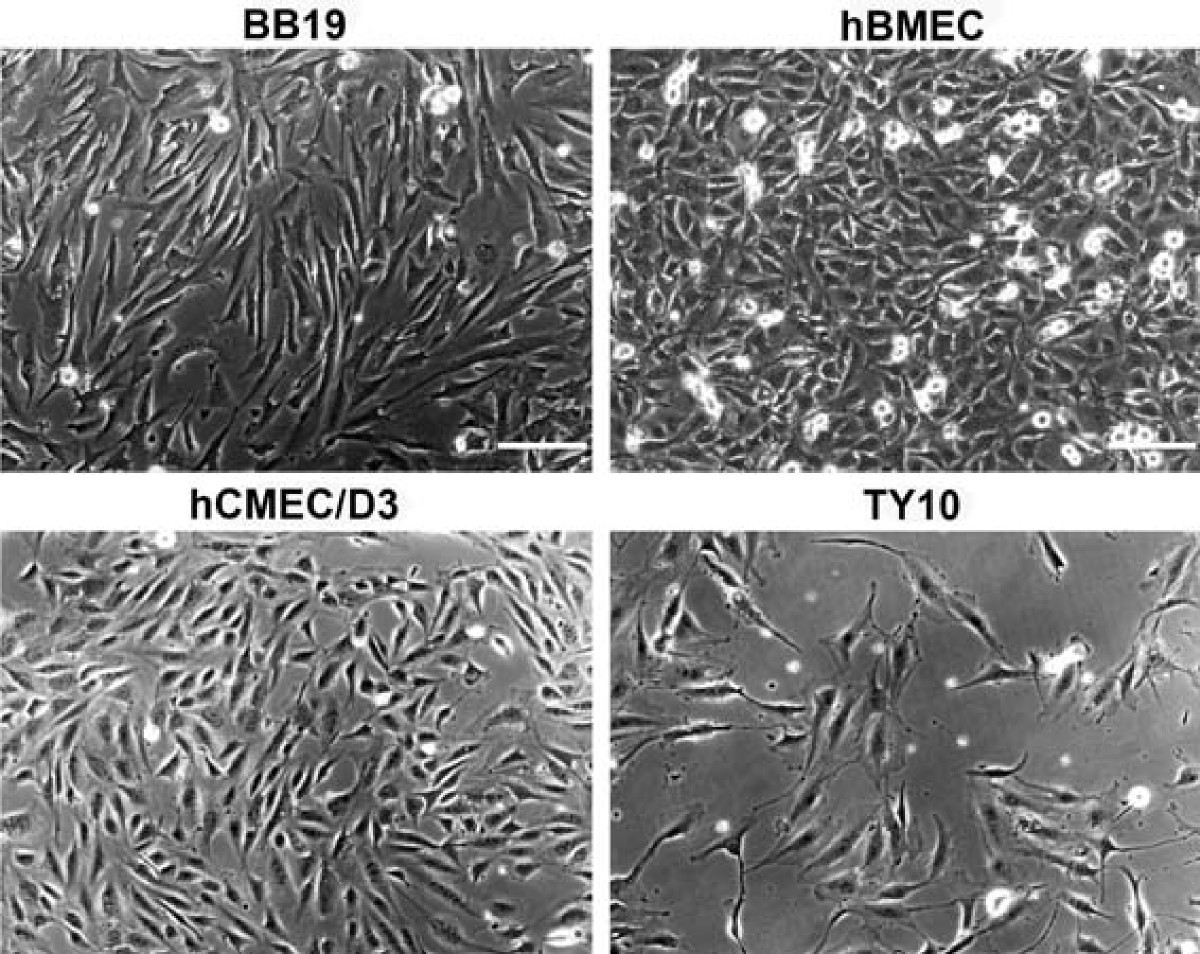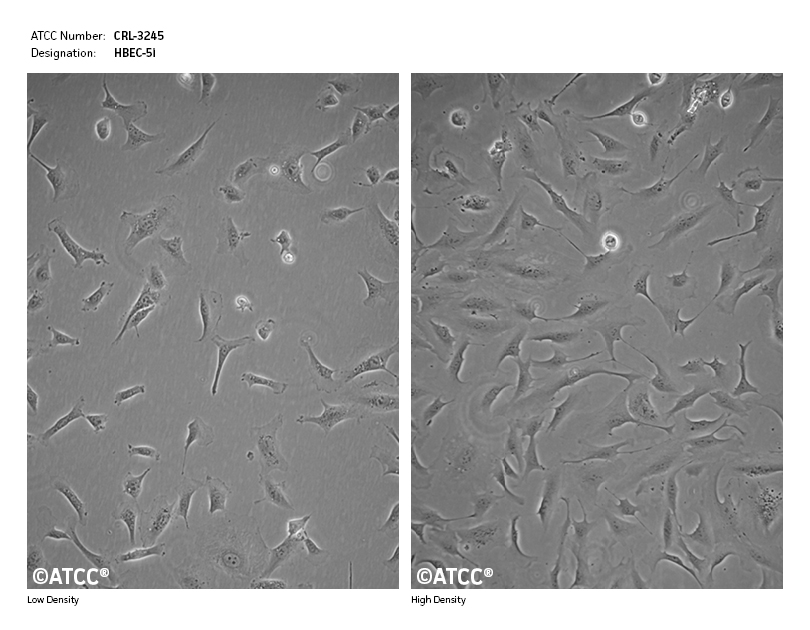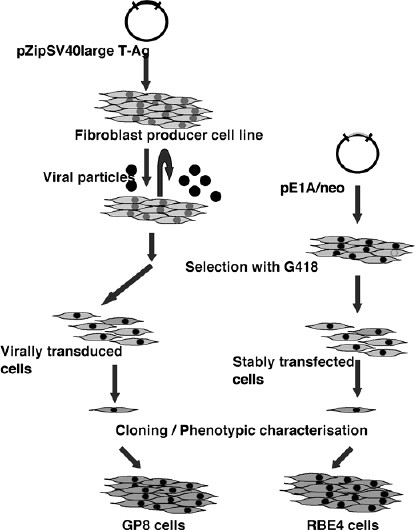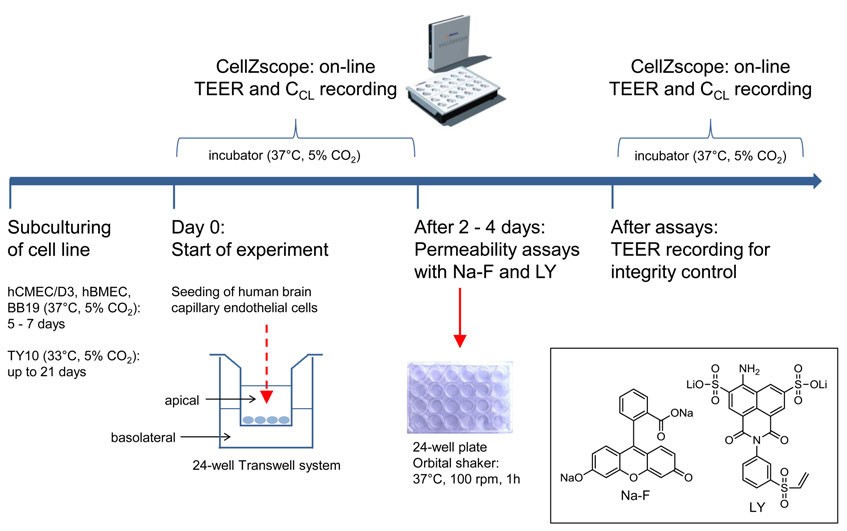P glycoprotein p gp expression at the blood brain barrier prevents unwanted blood borne toxins and signalling molecules from entering the brain.
Immortalised human brain endothelial cell line.
In the screening of four available immortalized human brain capillary endothelial cell lines hbmec proved to be the most suitable and promising cell line for a human in vitro bbb model in terms of barrier tightness and paracellular permeability in a 24 well mono culture system.
Immortalized human brain capillary endothelial cells can be used as an alternative.
Our cells displayed both tight junction and efflux transporter functionalities.
These cells proliferate indefinitely and preserve their differentiating properties after repetitive passages which is desirable for standardized screenings.
Cell differentiation was stimulated by eliminating an immortalization signal.
Our cells will offer a promising tool for in vitro blood brain barrier models.
Immortalized human cerebral microvascular endothelial cell line hcmec d3.
Our cells showed high proliferation activity while forming a monolayer.
A new human brain microvascular endothelial cell line has been established.
However the establishment of a reliable human cell line based bbb model has proven to be difficult.
The limited supply of primary human becs and their instability over passage number make this choice unattractive for medium high throughput studies.
Human capillary and microvascular endothelial cells hcec were transfected with the plasmid psv3 neo coding for the sv40 large t antigen and the neomycin gene.
Hbmec cells express p gp claudin 1 claudin 3 occludin 55 57 zo 1 54 56 58 ß catenin icam 1 and vcam 1 some of which were also shown under our experimental conditions ve cadherin zo 1 and.
The hcmec d3 bbb cell line has been extensively characterized for brain endothelial phenotype and is a model of human blood brain barrier bbb function.
This review provides a summary of immortalized endothelial cell lines as a guideline for future studies and improvements in the establishment of in vitro blood brain barrier models.
Here we demonstrate that the immortalized human brain endothelial cell line hcmec d3 is a useful alternative to primary brain endothelial cells as a model of the blood brain barrier for studies of central nervous system infection.
As a result 36 immortalized endothelial cell lines of human mouse rat porcine and bovine origins were found for the establishment of in vitro blood brain barrier and brain endothelium models.
Primary and immortalised human brain endothelial cells becs represent two suitable options for studying p gp function in vitro.






























